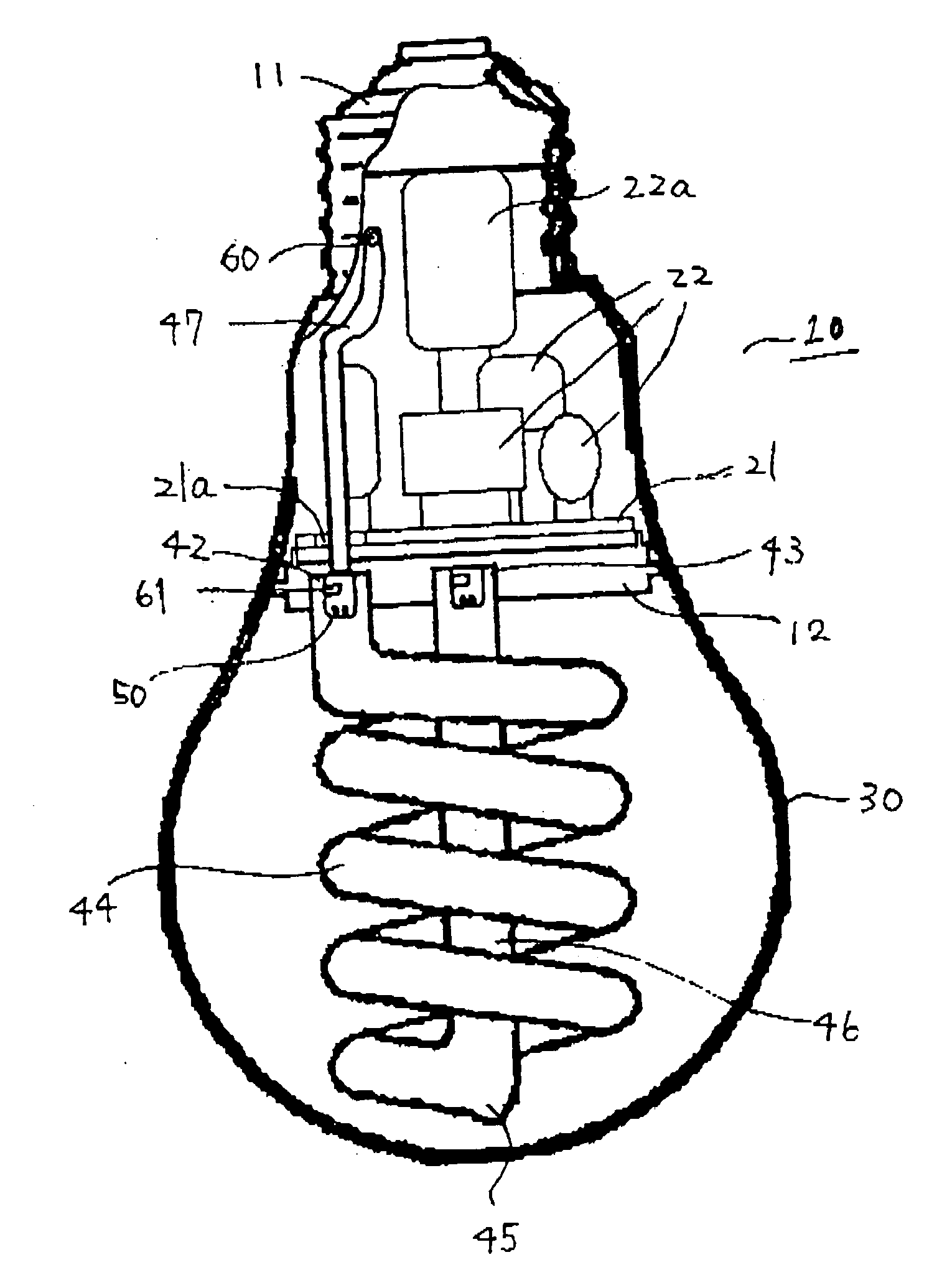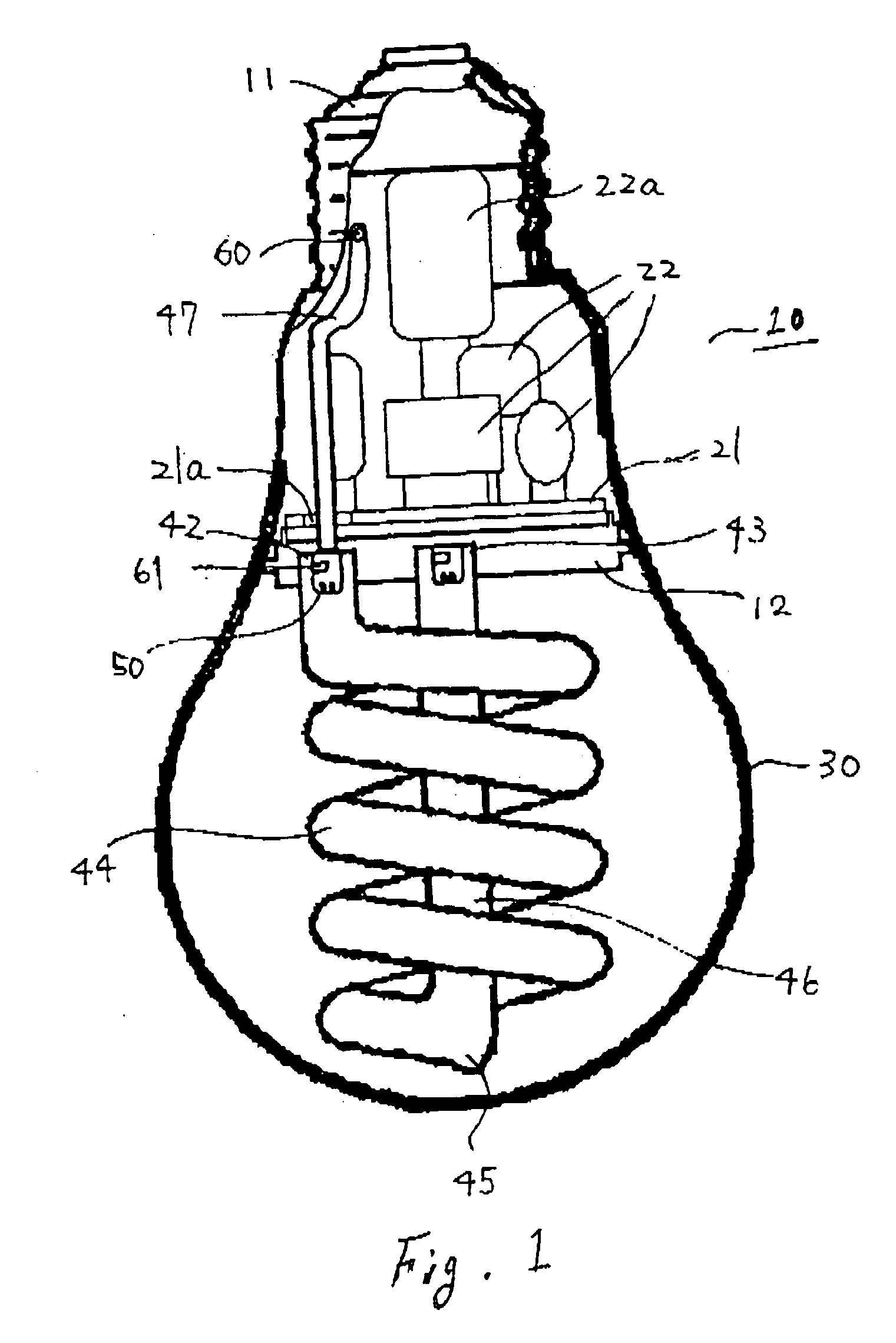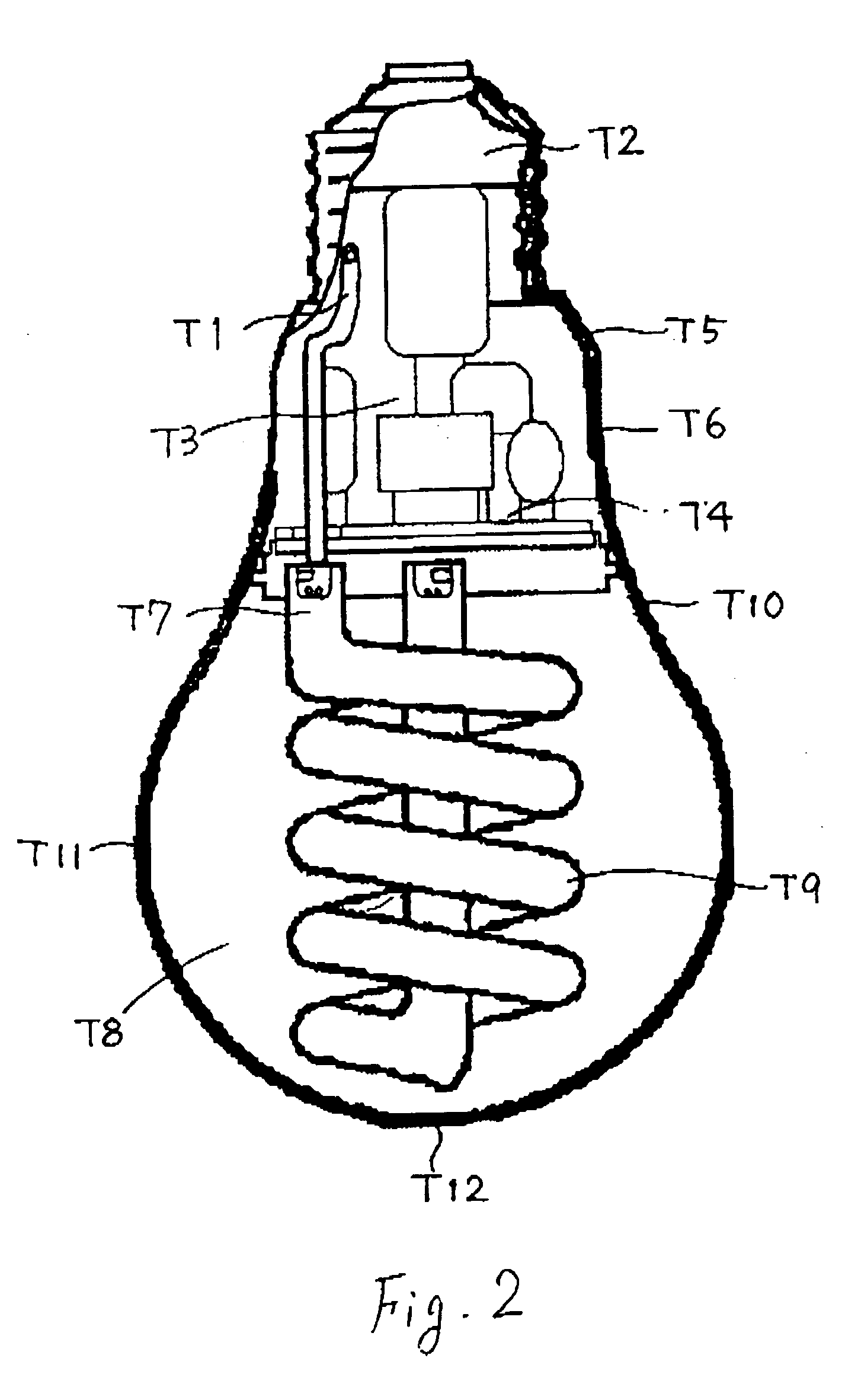Compact fluorescent lamp and luminaire using the same
a fluorescent lamp and compact technology, applied in the direction of fixed installation, sustainable buildings, light and heating apparatus, etc., can solve the problems of excessive rise in mercury vapor pressure in the fluorescent tube, affecting the efficiency of heat dissipation of fluorescent tubes, and reducing the heat dissipation efficiency of fluorescent tubes, so as to improve the delay of light flux rise-up, the effect of enhancing the light flux rise-up characteristi
- Summary
- Abstract
- Description
- Claims
- Application Information
AI Technical Summary
Benefits of technology
Problems solved by technology
Method used
Image
Examples
first embodiment
[0089]FIG. 1 shows a compact fluorescent lamp.
[0090] As shown in FIG. 1, compact fluorescent lamp 10 is equipped with a fluorescent tube 40, a lighting device 20, a holder 11, a cap 11, and a glove 30. The glove 30, the holder 12 and the cap 11 constitute an envelope 15. The envelope 15 is shaped in a profile approximating to that of ordinary incandescent lamps with 60 W rated-powers. Here, the term “ordinary incandescent lamp” is defined in “JISC7501”. The length of the compact fluorescent lamp 10, i.e., the size of the envelope 15 from the head of the cap 11 to the head of the glove 30, is 110-125 mm. The maximum diameter of the compact fluorescent lamp 10, i.e., the diameter of the glove 30, is 50-60 mm. Here, the diameter of the holder 12 is formed in broadly around 40 mm.
[0091] On the inner surface of fluorescent tube 40, a protective film (not shown) made of alumina is applied, and further a fluorescent substance layer (not shown) is applied on the protective film. The fluore...
second embodiment
[0129] Referring now to FIG. 3, the present invention will be explained.
[0130]FIG. 3 is a partial sectional front view showing the second embodiment of the compact fluorescent lamp. Here, the same reference numerals are added to the same or corresponding portions as of the first embodiment shown in FIG. 1, and the detailed explanation is omitted.
[0131] In the second embodiment, a pellet type zinc amalgam containing the mercury below 10 mg is enclosed in the fluorescent tube 40 in place of the main amalgam.
[0132] The fluorescent tube 40 constitutes a helical fluorescent tube wherein a straight glass tube is folded at the turning portion 45 around its central portion, and the entire of both sides arranged in parallel are constituted in a double-helical fluorescent tube by being helically revolved in the same direction. And a thin tube 47 helically protrudes from one of the tube ends 42 along the line of the corresponding one of the helical fluorescent tubes.
[0133] The tube end 42 o...
third embodiment
[0150] In this third embodiment, the main amalgam 60 is placed in the tip end of the thin tube 47, and the tip end of the thin tube 47 is adhered to the inner surface of the cap 11 by using a silicone adhesive 51. A cutout 14 is defined around the neck 13 of the holder 12 to be mounted with the cap 11, and then the tip end of the thin tube 47 is adhered to the inner surface of the cap 11.
[0151] In this third embodiment, the tip end of the thin tube 47 and if necessary the circuit elements such as the electrolytic capacitor located in the vicinity of the tip end of the thin tube are preliminarily applied the silicone adhesive, and then mechanically and thermally coupled to the cap 11 by the silicone adhesive at the time that the cap 11 is attached to the holder 12
[0152] Now, a result of measuring temperatures in the compact fluorescent lamp having the fluorescent tube as shown in FIG. 4e will be explained. The measurement was performed in the case that the tip end of the thin tube 47...
PUM
 Login to View More
Login to View More Abstract
Description
Claims
Application Information
 Login to View More
Login to View More - R&D
- Intellectual Property
- Life Sciences
- Materials
- Tech Scout
- Unparalleled Data Quality
- Higher Quality Content
- 60% Fewer Hallucinations
Browse by: Latest US Patents, China's latest patents, Technical Efficacy Thesaurus, Application Domain, Technology Topic, Popular Technical Reports.
© 2025 PatSnap. All rights reserved.Legal|Privacy policy|Modern Slavery Act Transparency Statement|Sitemap|About US| Contact US: help@patsnap.com



